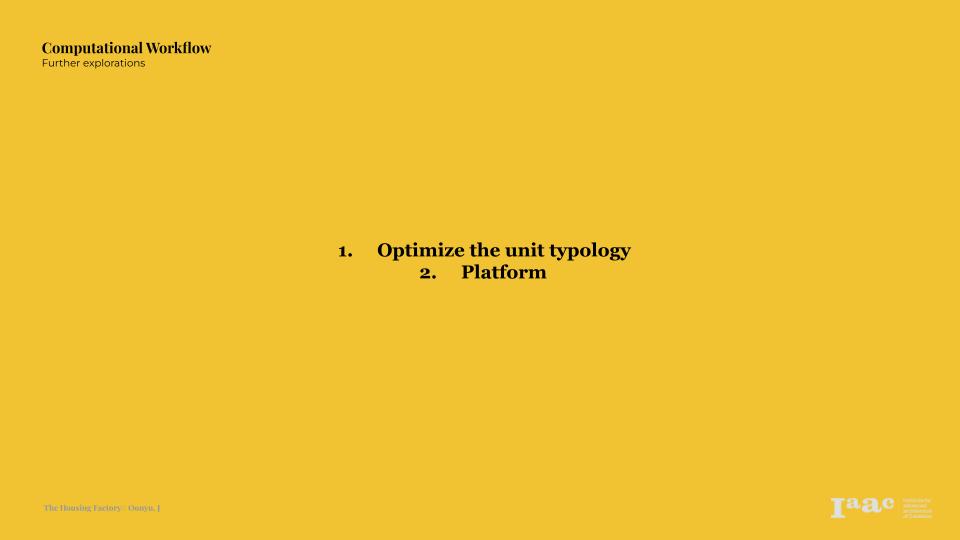The Housing Challenge in Sub Saharan Africa
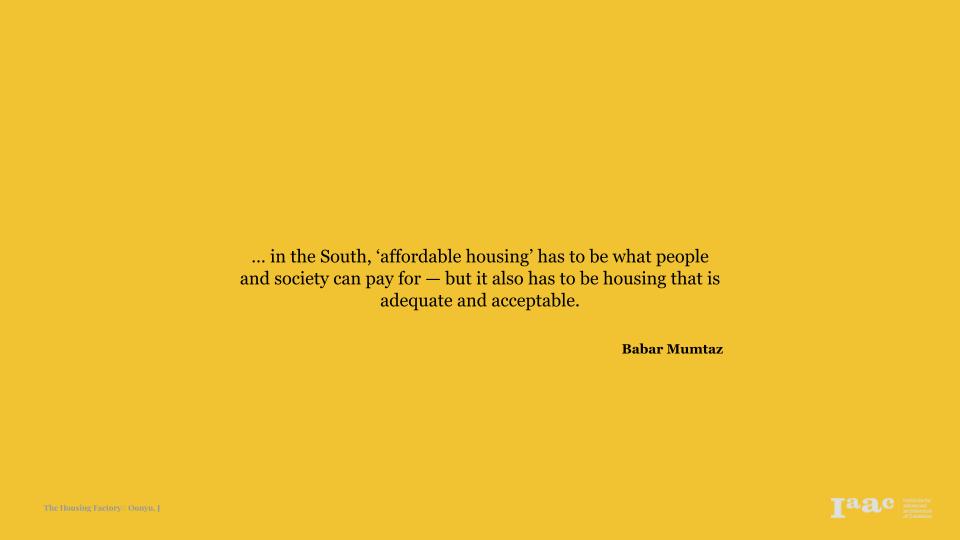
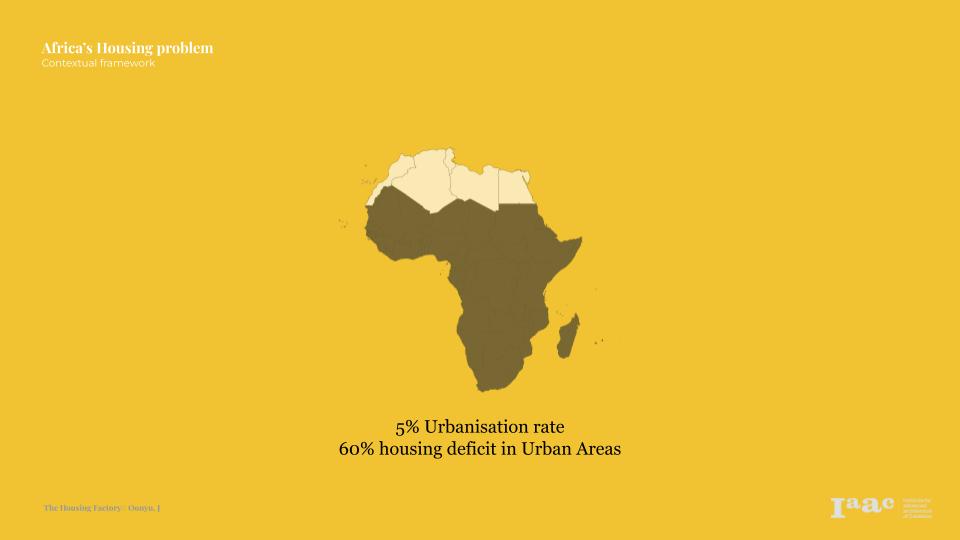
In most sub saharan countries, a case of uganda; despite the challenges with informality, this sector provides housing to over 60% of the urban population with the “tenement” as the most common housing typology.
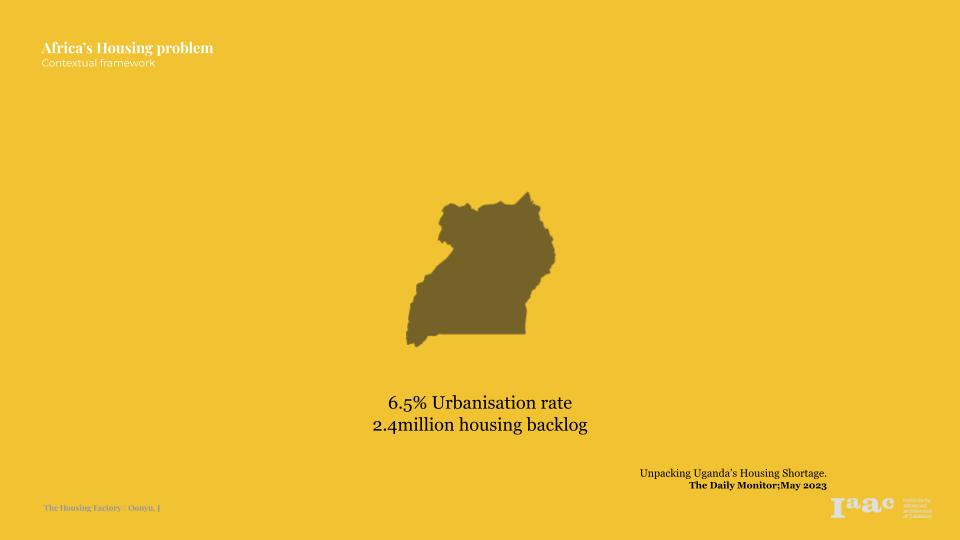

Part of the housing challenge stems from the evolution of housing policy in Uganda and in 2016; after multiple failures by the government to meet the housing demands, it transferred the responsibility of housing development to individuals while maintaining the role of regulation and legislation.
The incentives that the government extended to its citizens fostered a boom in housing delivery, however due to incapacity in enforcing regulation, the informal sector developed their own form of housing that catered to the lower income demographic. This is what we now see as the “Muzigo” or “tenement.”
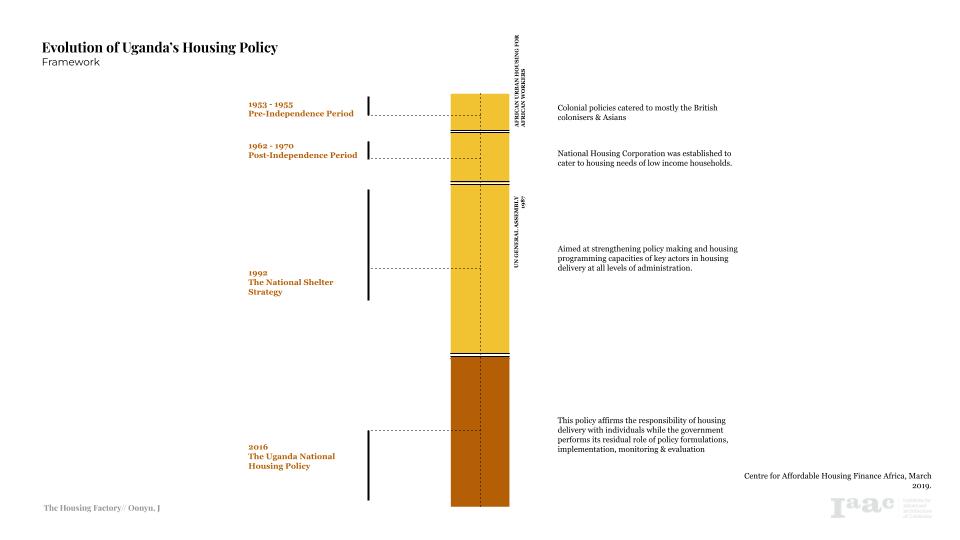
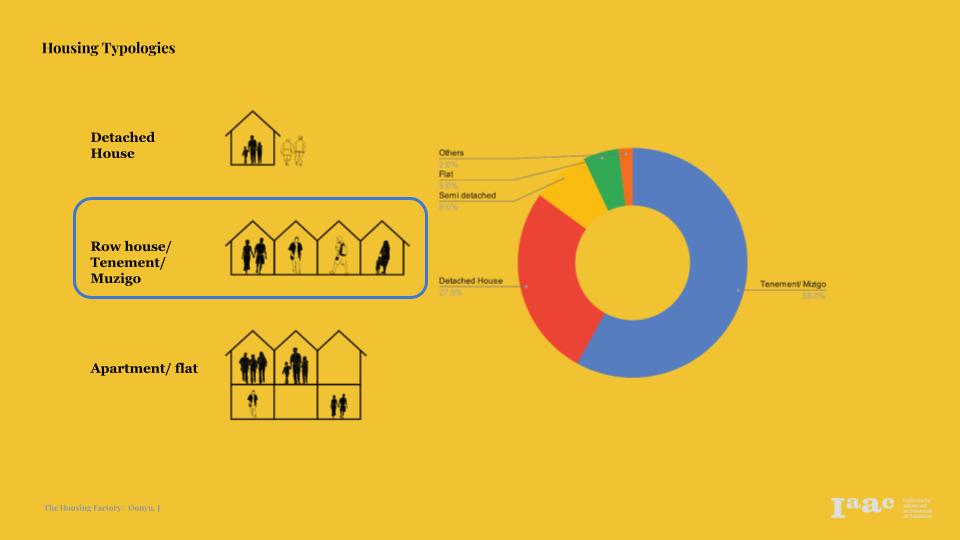
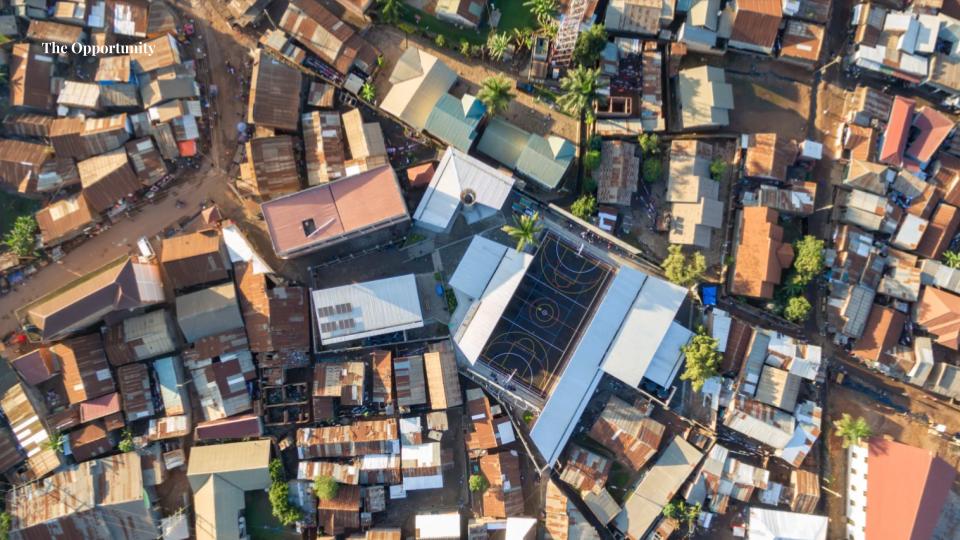

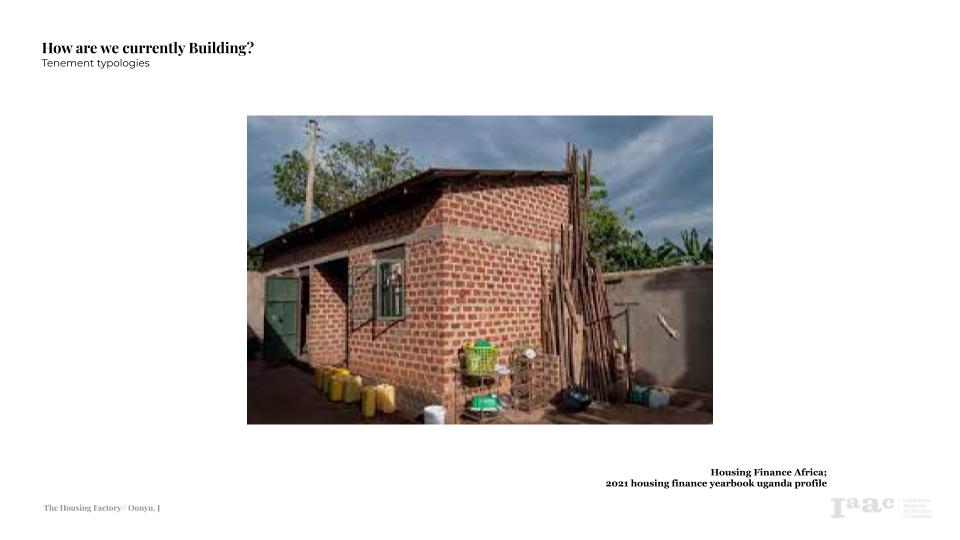
The Housing Typology

Few individuals are able to afford the services of an Architect or professional to design this housing typology. Consequently, those who do, get the one bedroom “deluxe” unit seen below. Only about 10% of the population are able to afford these services.


Research Interest
Based on the current housing challenges, the research interest is to leverage advanced computation to democratise design and in turn foster quicker delivery of housing for the informal sector that has no access to architects and mostly self-build.

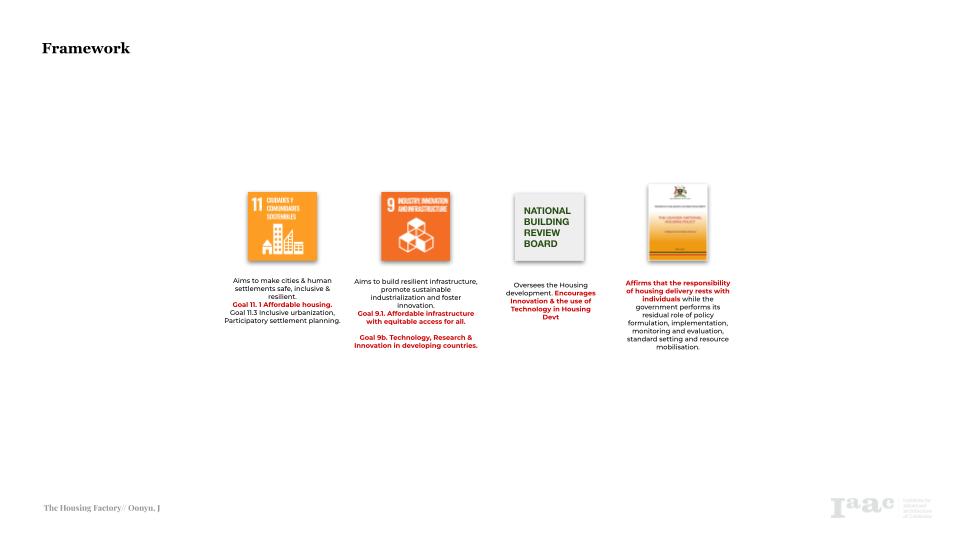
As part of the state of the Art, I looked into three ways this problem is currently being approached computationally;
- House 2 Gan – This is a graph-constrained generative adversarial network. The idea is to encode the constraint into the graph structure and develop layouts. Unlike GANs, H2G allows the designer more control because the designer designs a graph from which floorplans are generated.
- Procedural modelling – These are relevant because they are web-based platforms that allow interaction. Unlike the rest which are research papers, these can be accessed.
- Shape grammars – The Shape grammars by Jose Duarte is relevant because it analyzes an Architects Housing development and deconstructs it into a systematic process that allows automatic reconstruction into shape grammars.
Based on the state of the arts, the research leaned towards learning from shape grammers to inform the computational workflow.
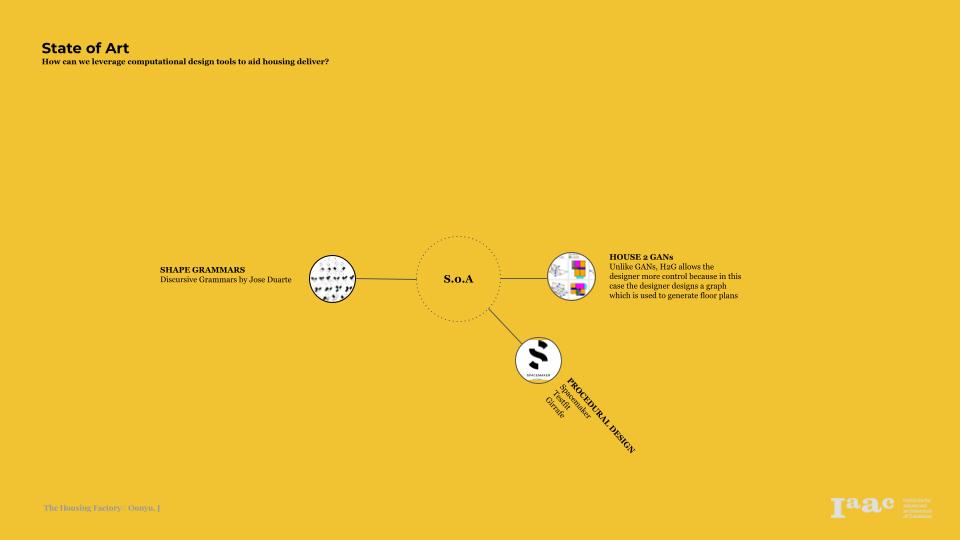
The challenge therefore was to develop a workflow that could respond to varied irregular site typologies & accommodate the row house typology in an incremental way of building.
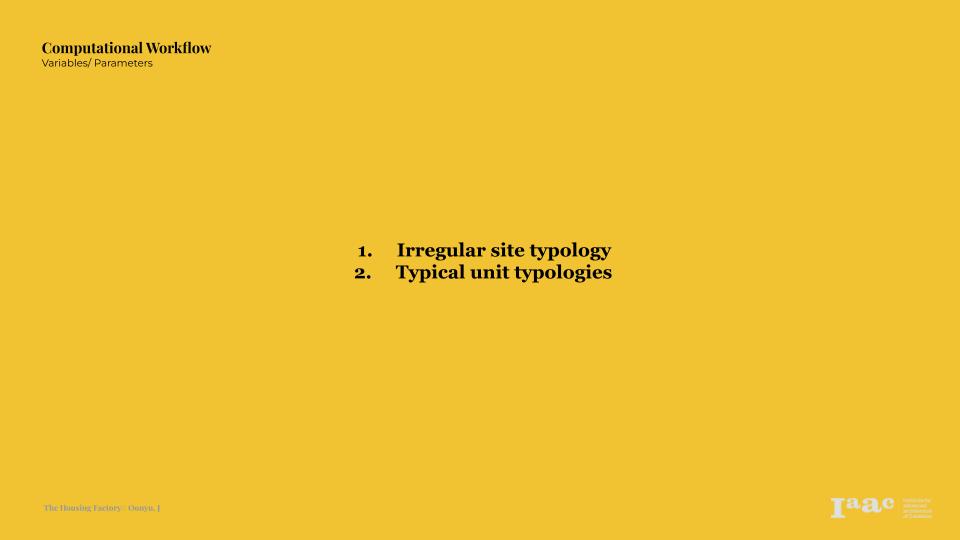
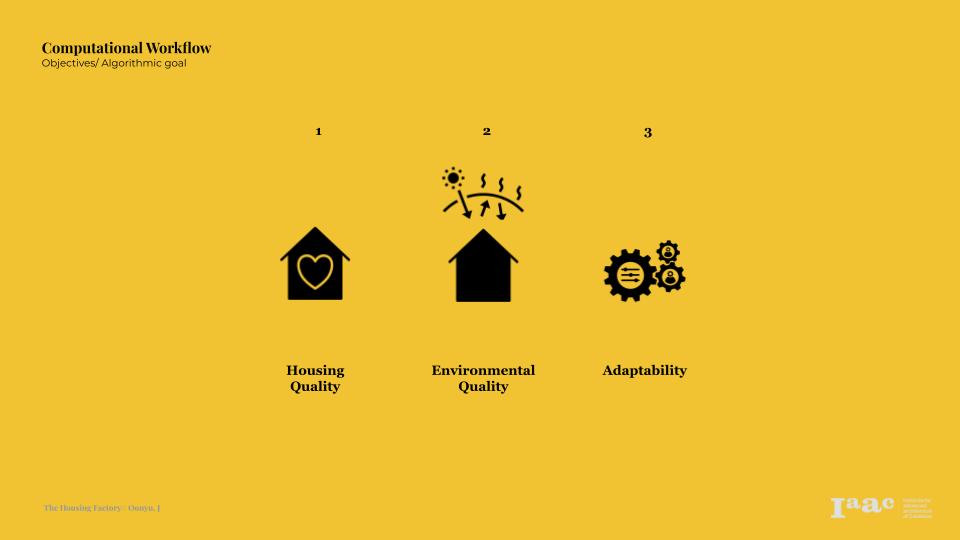
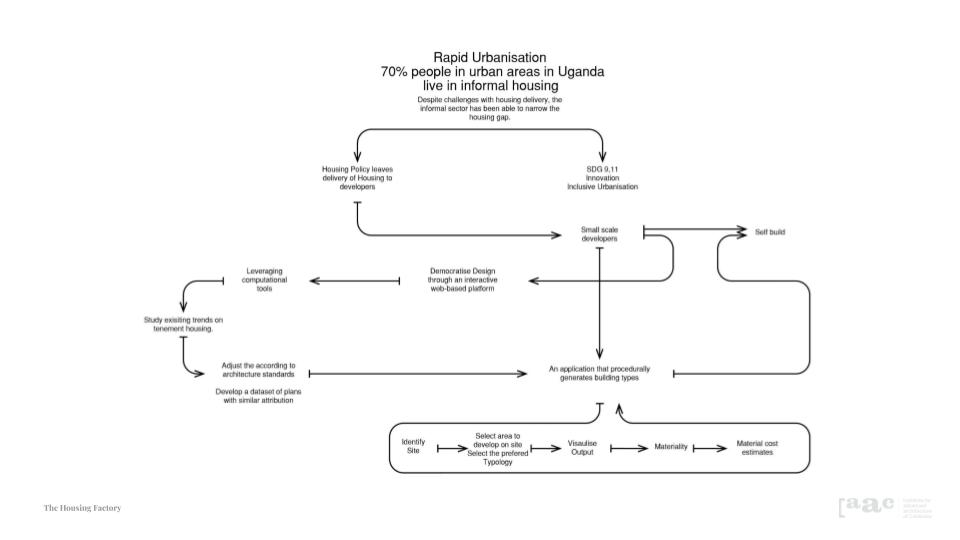
The computational workflow
Step 1: Identified a locale on the outskirts of Kampala city, where we have majority of these typologies. Most are irregular with different access means. Some with one end as adjacent to street, while others with narrow entry

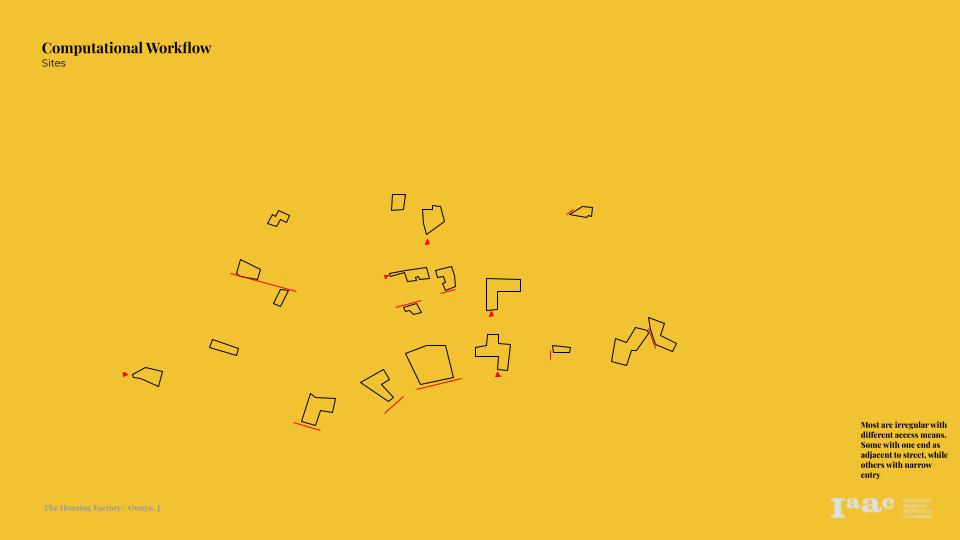

=4 means a simple crv
</> = 4 would constitute complex crvs
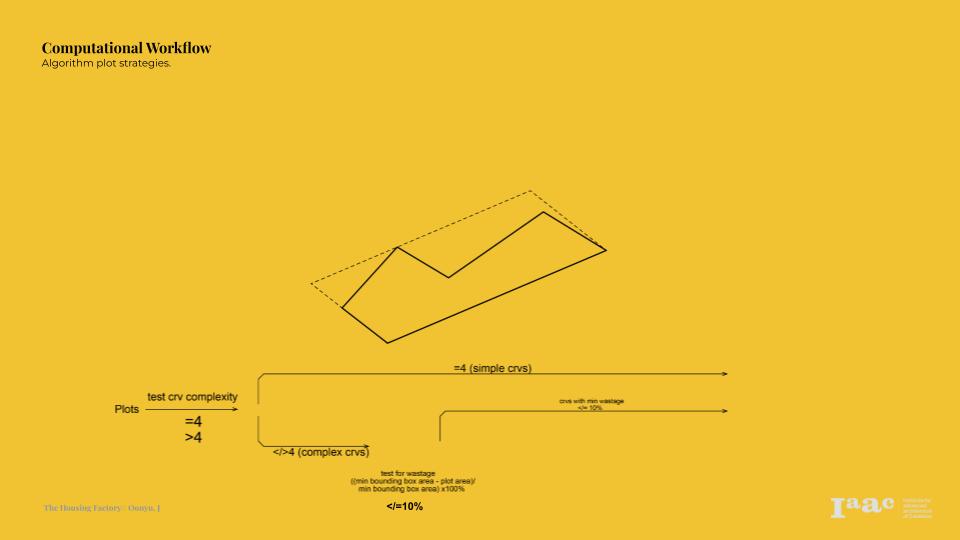
We further generated a strategy to evaluate the area of the polygon and categorise these areas; An area based on min bounding box vs plot area.
We do this to further categorise the plots based on minimal wastage of land.
In this case we keep out wastage to </= 10%
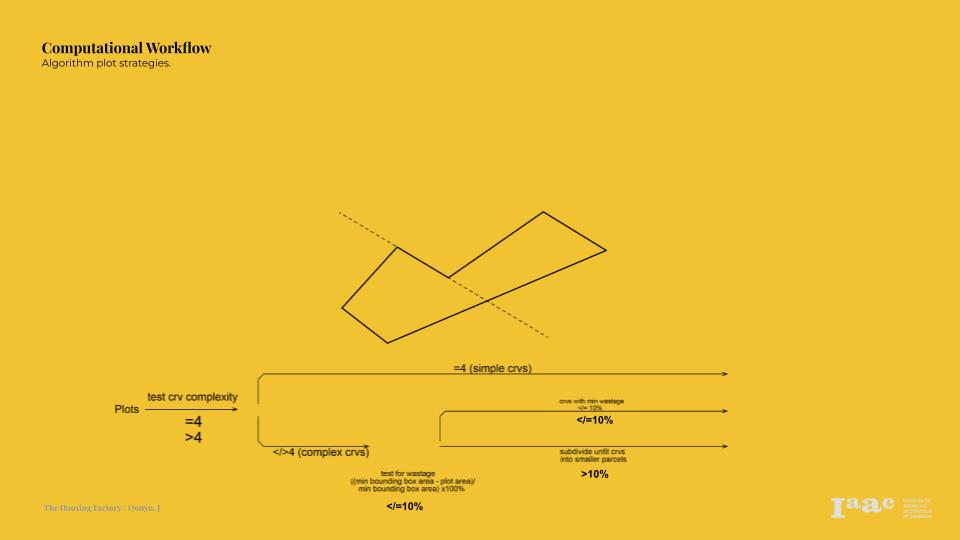
We developed a workflow that divides the crvs at the most optimal location. Maintaining orthoganality with one edge.
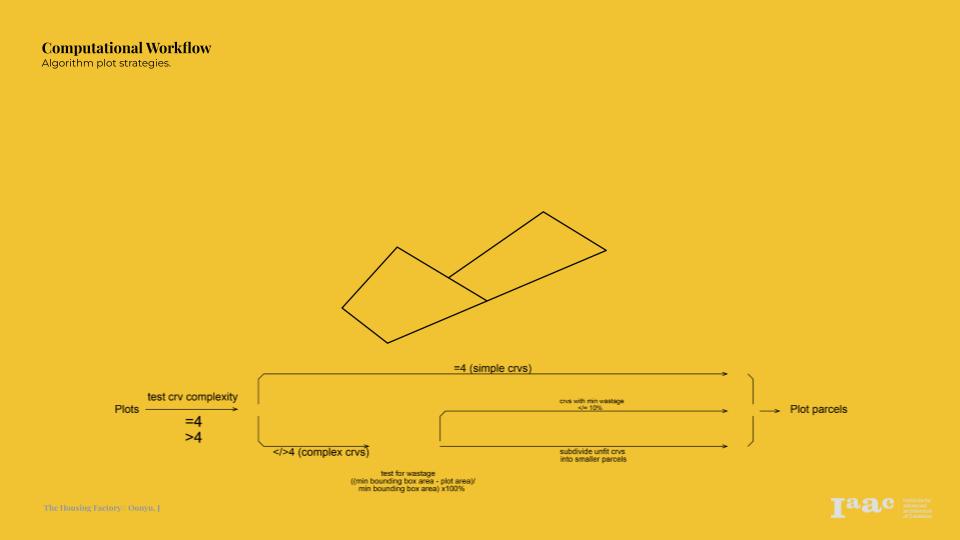
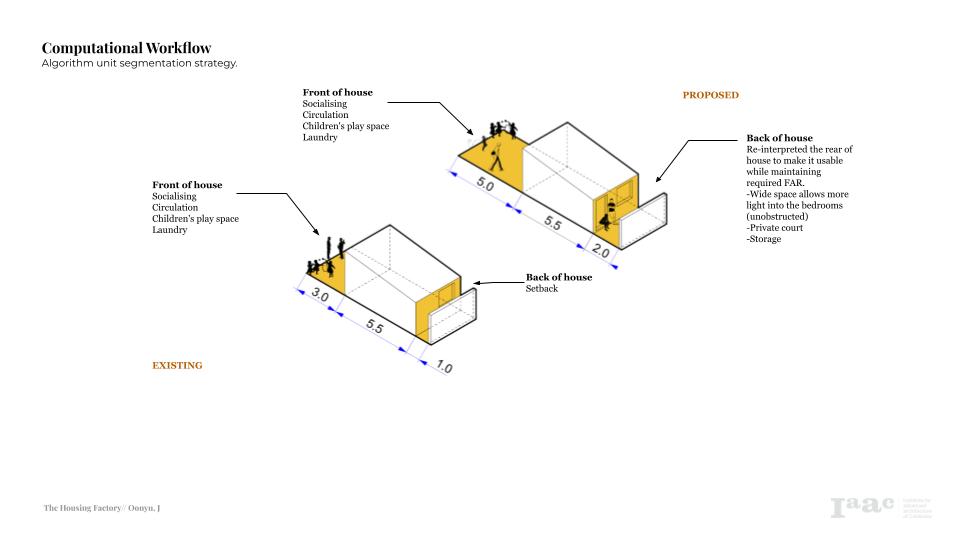
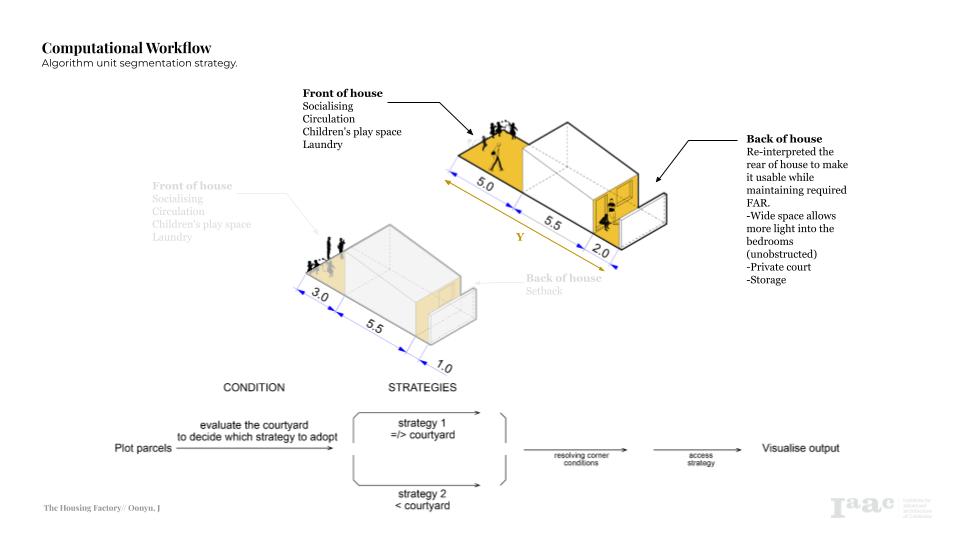
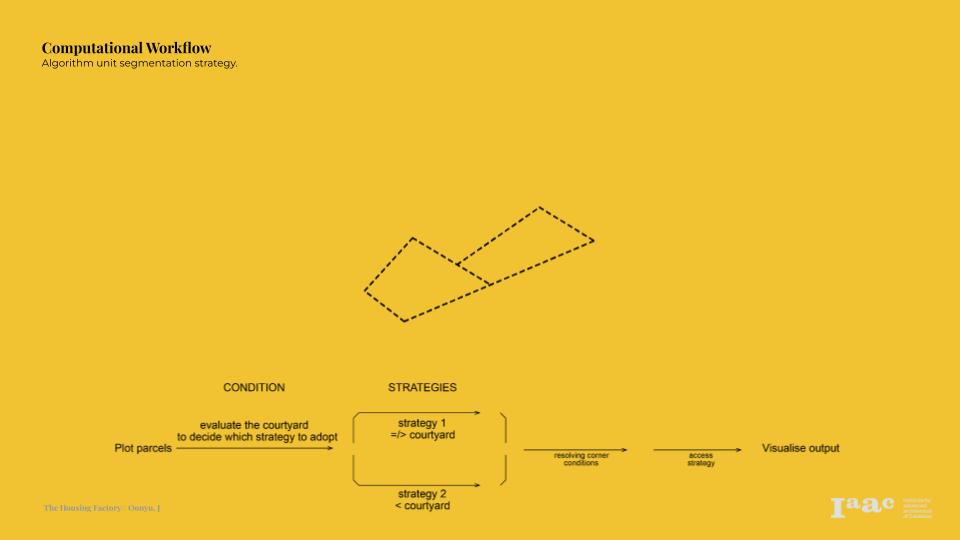

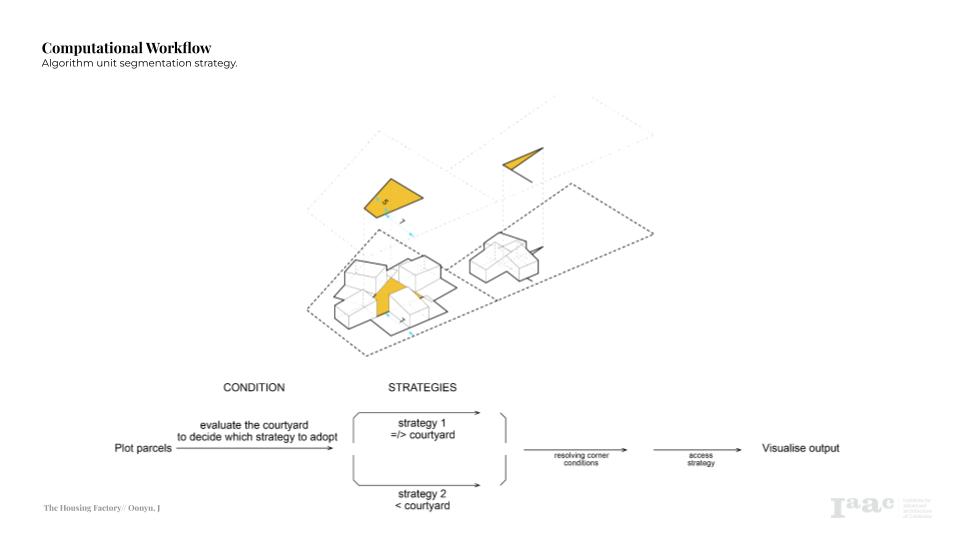
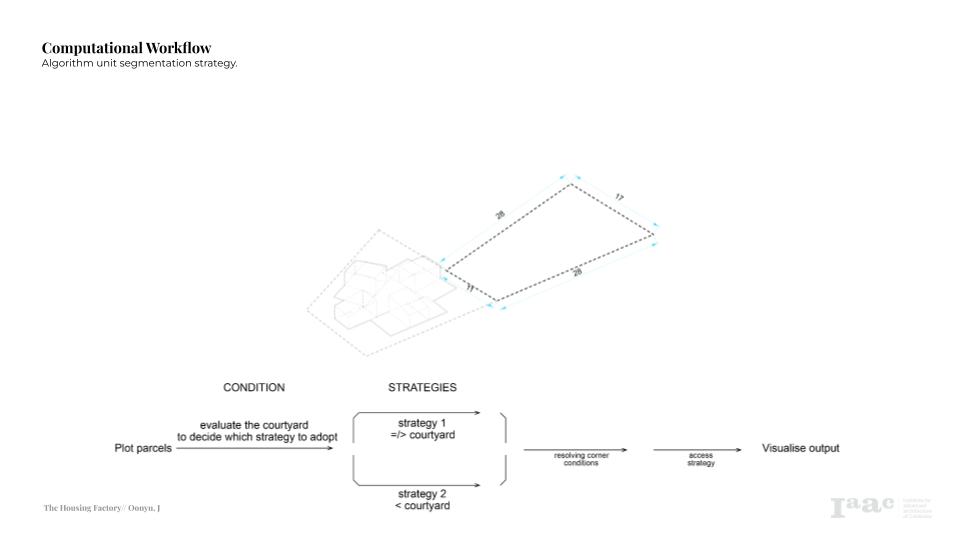
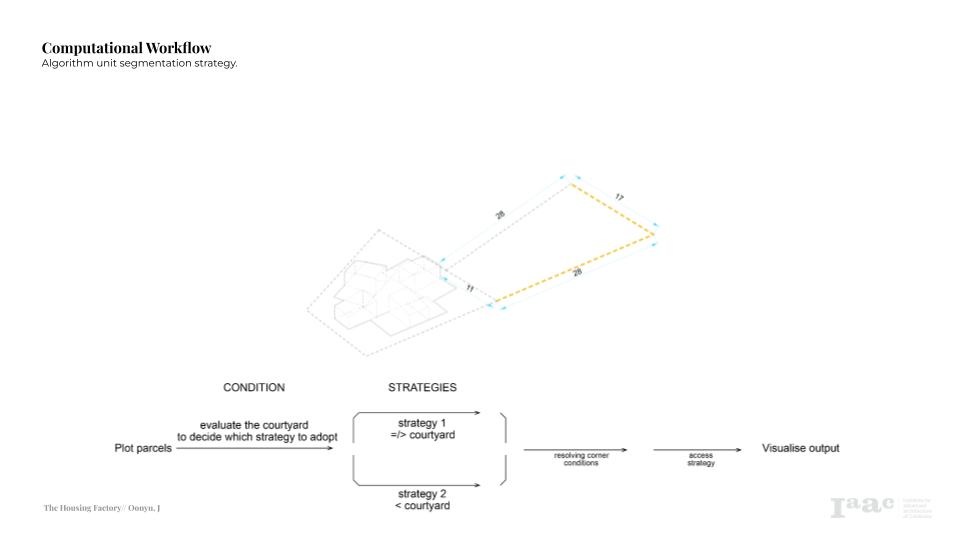


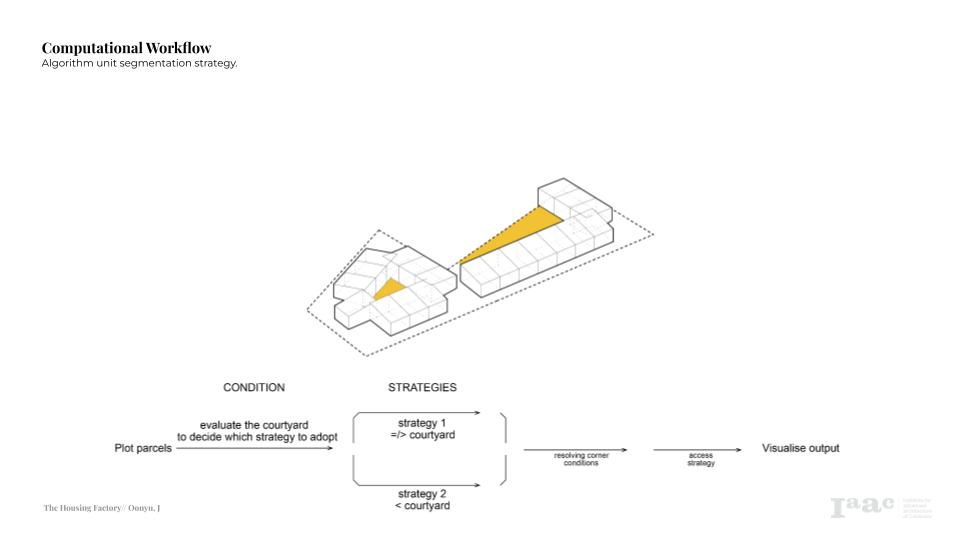

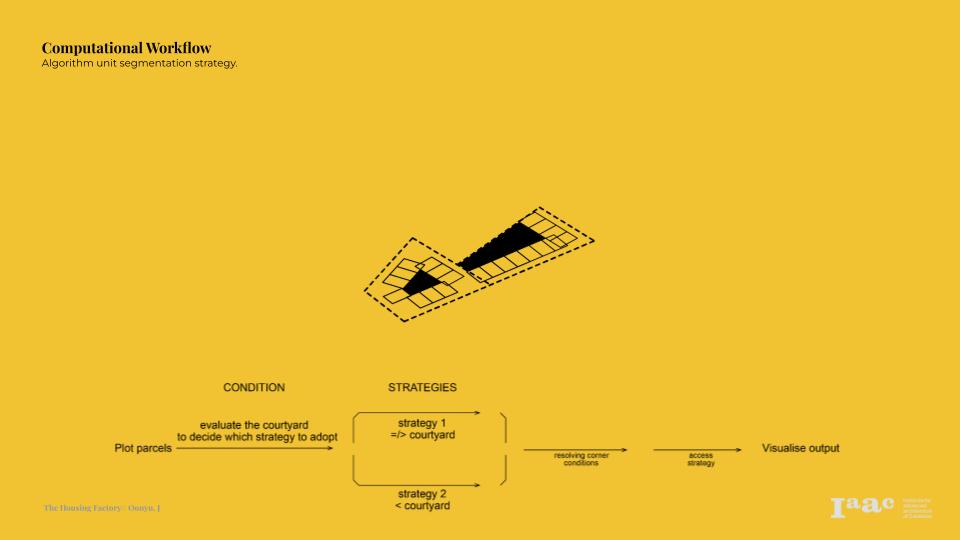
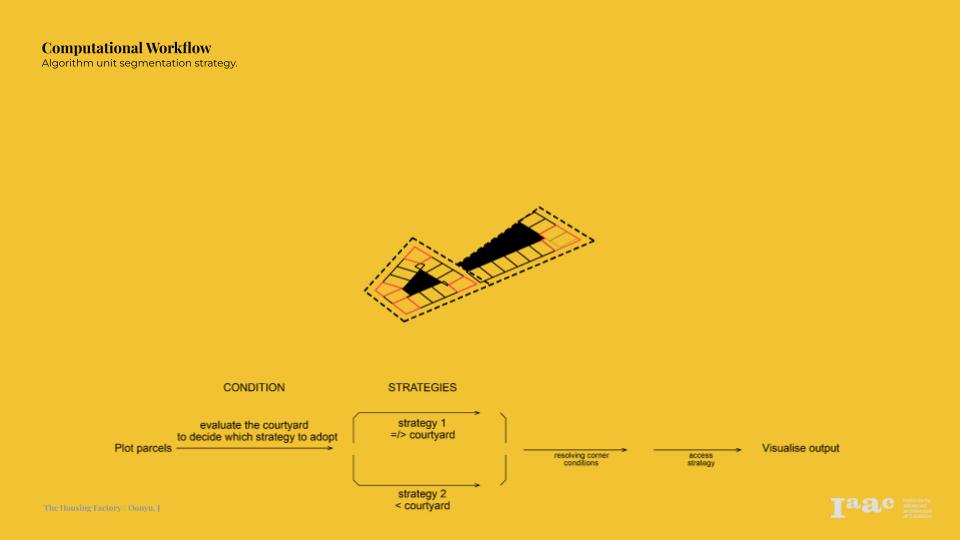

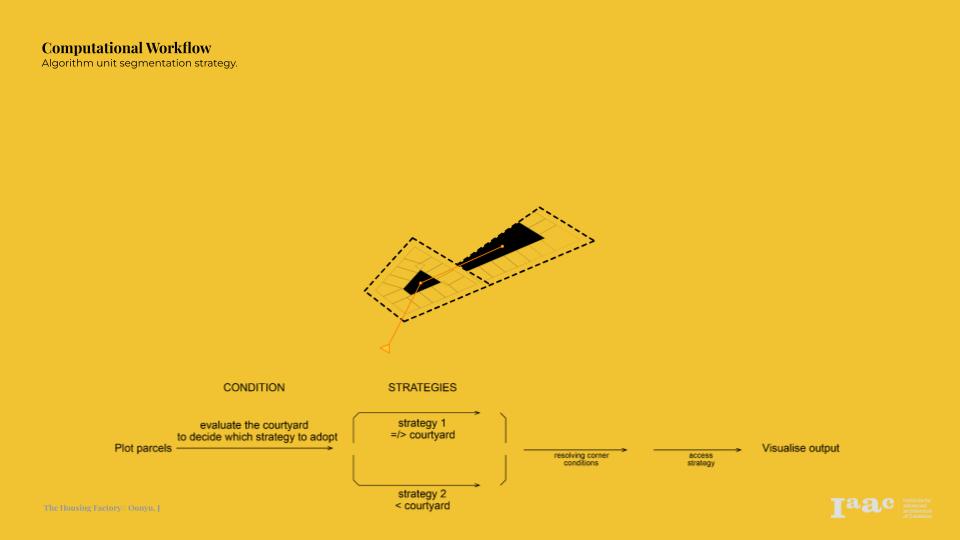
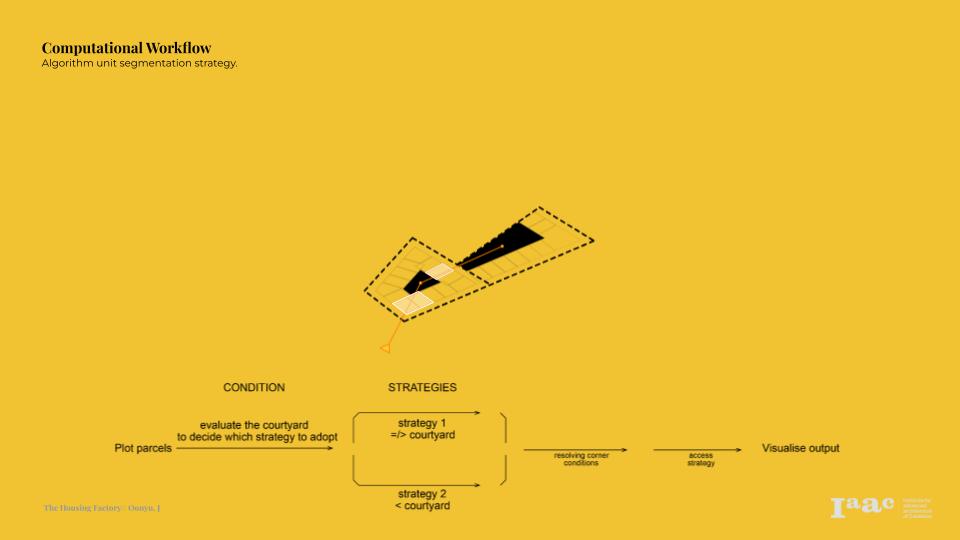
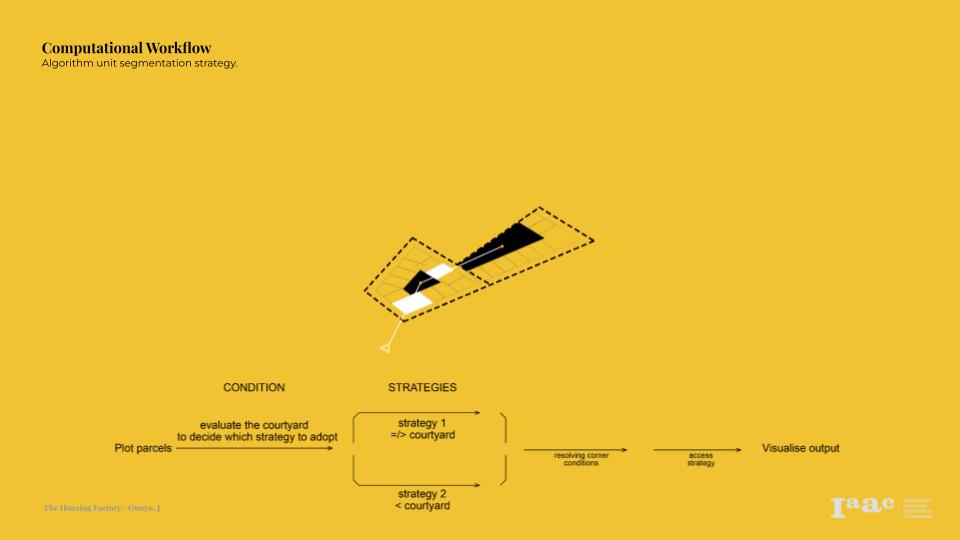

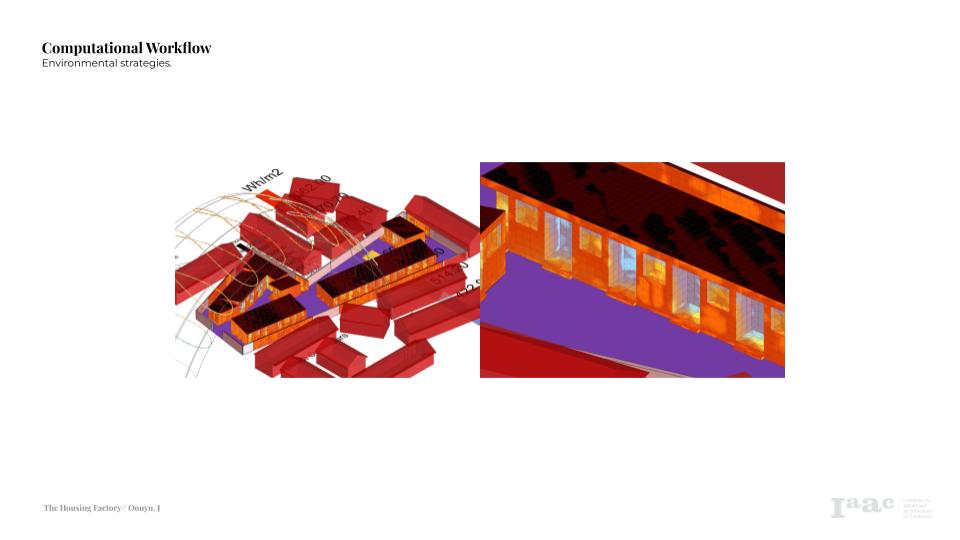
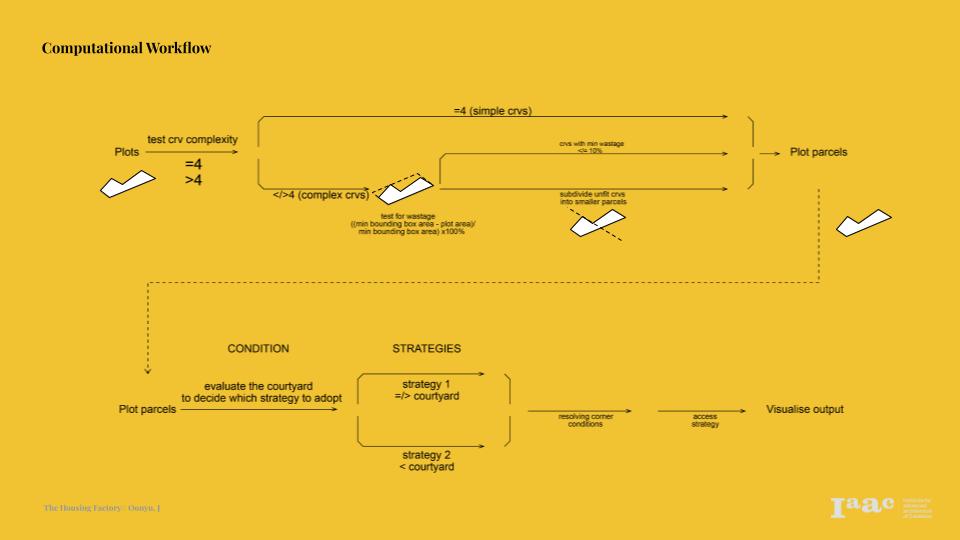
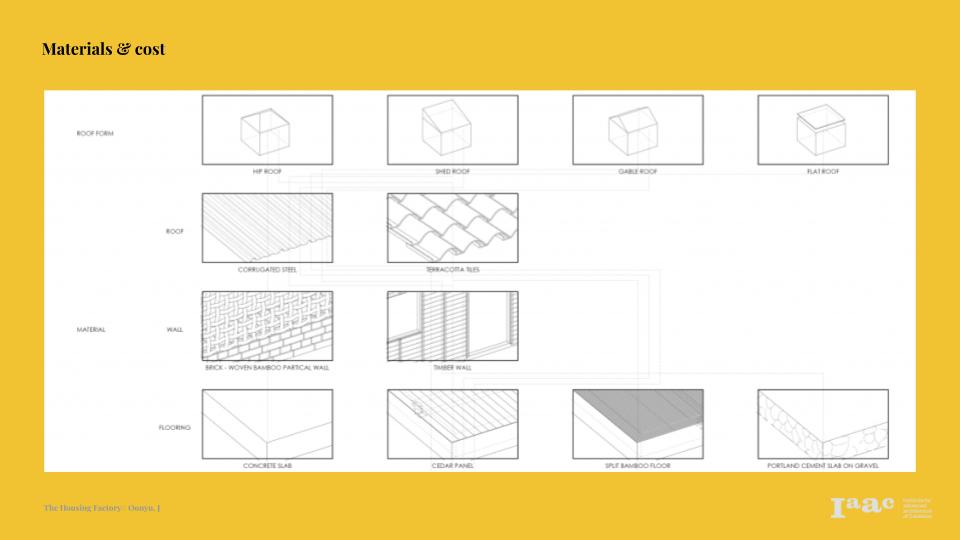
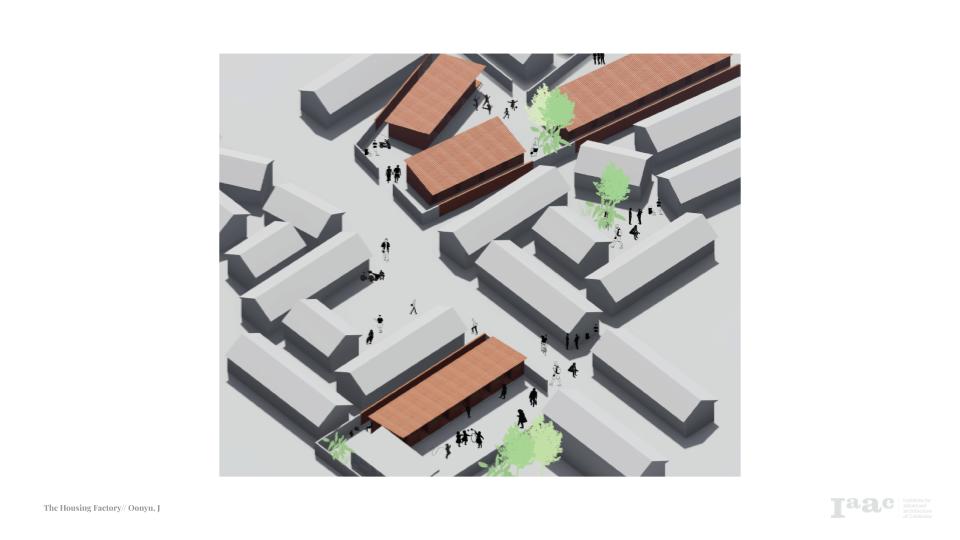
Further explorations and research would be to test the workflow with different typologies of housing, using the climate analysis to inform sizing and placement of openings based on different climates and and eventually creating platform where this can be used by designers and developers.
